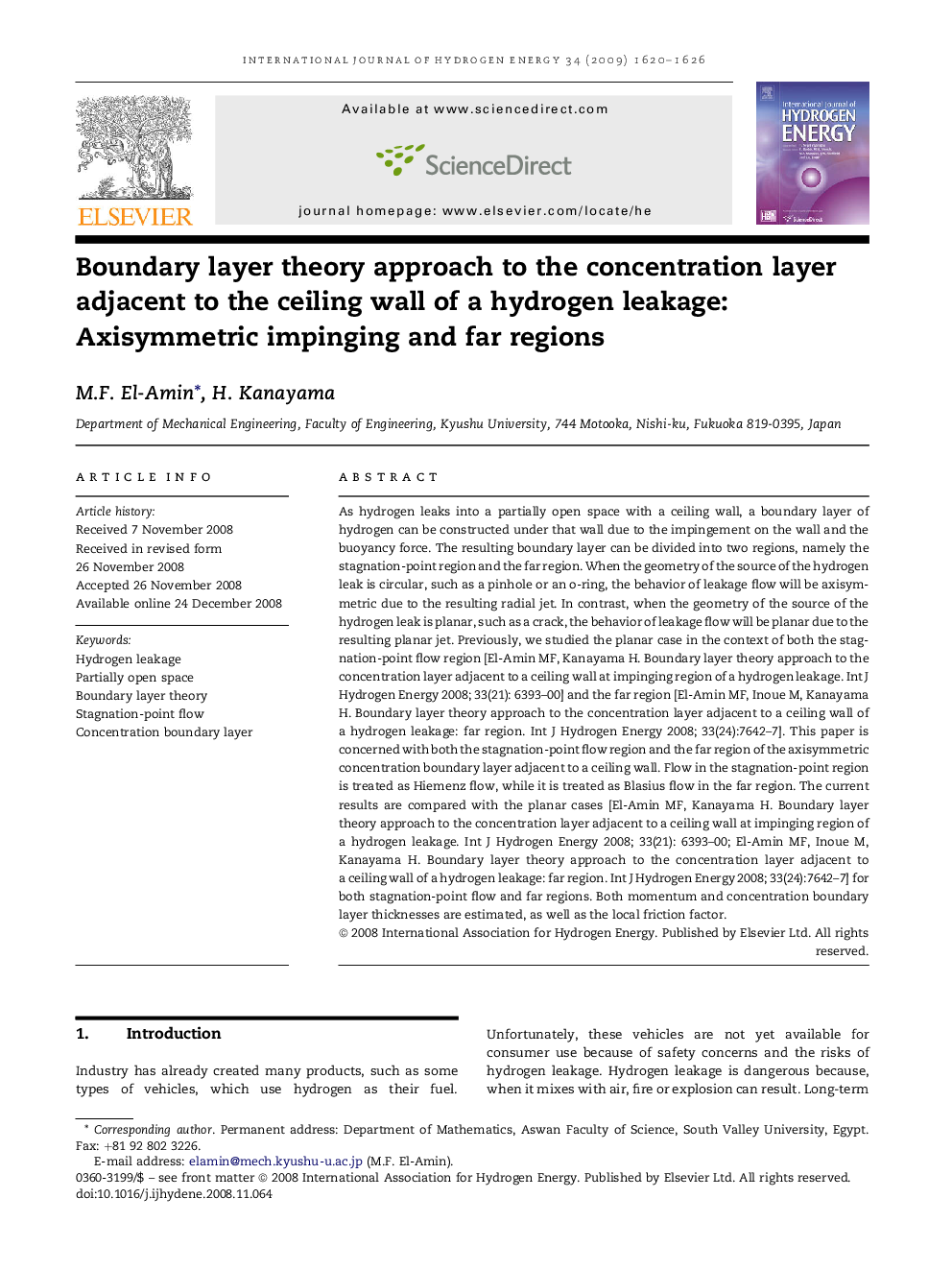| Article ID | Journal | Published Year | Pages | File Type |
|---|---|---|---|---|
| 1283380 | International Journal of Hydrogen Energy | 2009 | 7 Pages |
As hydrogen leaks into a partially open space with a ceiling wall, a boundary layer of hydrogen can be constructed under that wall due to the impingement on the wall and the buoyancy force. The resulting boundary layer can be divided into two regions, namely the stagnation-point region and the far region. When the geometry of the source of the hydrogen leak is circular, such as a pinhole or an o-ring, the behavior of leakage flow will be axisymmetric due to the resulting radial jet. In contrast, when the geometry of the source of the hydrogen leak is planar, such as a crack, the behavior of leakage flow will be planar due to the resulting planar jet. Previously, we studied the planar case in the context of both the stagnation-point flow region [El-Amin MF, Kanayama H. Boundary layer theory approach to the concentration layer adjacent to a ceiling wall at impinging region of a hydrogen leakage. Int J Hydrogen Energy 2008; 33(21): 6393–00] and the far region [El-Amin MF, Inoue M, Kanayama H. Boundary layer theory approach to the concentration layer adjacent to a ceiling wall of a hydrogen leakage: far region. Int J Hydrogen Energy 2008; 33(24):7642–7]. This paper is concerned with both the stagnation-point flow region and the far region of the axisymmetric concentration boundary layer adjacent to a ceiling wall. Flow in the stagnation-point region is treated as Hiemenz flow, while it is treated as Blasius flow in the far region. The current results are compared with the planar cases [El-Amin MF, Kanayama H. Boundary layer theory approach to the concentration layer adjacent to a ceiling wall at impinging region of a hydrogen leakage. Int J Hydrogen Energy 2008; 33(21): 6393–00; El-Amin MF, Inoue M, Kanayama H. Boundary layer theory approach to the concentration layer adjacent to a ceiling wall of a hydrogen leakage: far region. Int J Hydrogen Energy 2008; 33(24):7642–7] for both stagnation-point flow and far regions. Both momentum and concentration boundary layer thicknesses are estimated, as well as the local friction factor.
